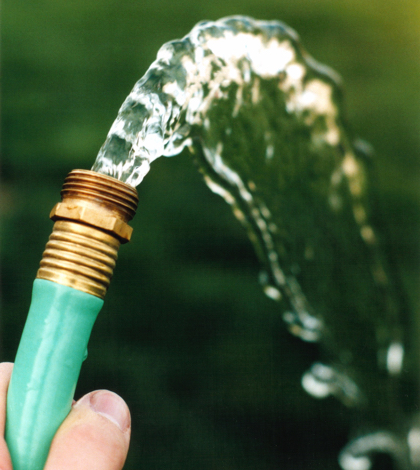Californians clearly understand the need for water conservation. Though this winter’s epic storms have made water more abundant in previously parched California, urban Californians monthly water conservation was 20.5 percent this January (when compared to the January 2013 baseline) versus a 17.2 percent savings in January 2016.
“Californians understand that ongoing water conservation benefits everyone,” said State Water Resources Control Board (SWRCB) Chair Felicia Marcus, “and we are grateful that people have not forgotten five years of devastating drought now that our reservoirs are overflowing.”
Cumulatively, the statewide savings from June 2015 through January 2017 remains at 22.5 percent, compared with the same months in 2013-2014. Some 2.51 million acre-feet of water has been saved since June 2015. This equates to enough water to supply more than 12.5 million people for a year – almost a third of the state’s population.
In addition to announcing the state’s most recent water this week the SWRCB also adopted a resolution to address climate change impacts, including enhanced protection of vulnerable communities and infrastructure from droughts, floods, and sea level rise. This winter’s record precipitation on the heels of five years of extreme drought has caused significant flooding in some areas throughout the state. Climate change has been acknowledged for the shift from extreme dry to extreme wet and is expected to become more frequent in the years to come.
“Californians continue to conserve despite the wet weather in many areas,” said SWRCB’s Marcus. “This ongoing effort is important rain or shine for all sorts of reasons, in light of the greater extremes we can expect with climate change and increasingly weird weather. We’re going to need to use all our tools including conservation and efficiency, water recycling, stormwater capture, and storing water above and below ground in wet times to get us through the dry times to deal with the Mack truck of climate change that has already arrived.”
In February, the Board extended its existing water conservation regulations, which prohibit wasteful practices, such as watering lawns right after rain and hosing down driveways, and set a conservation mandate only for urban water suppliers that could not demonstrate they have enough water reserves to withstand an additional three dry years. However, water savings have remained significant for many communities that had certified that they did not need state-imposed mandates to keep conserving.
January’s water savings of 20.5 percent (74,249 acre-feet or 24.2 billion gallons) was a tenth of a percent behind the December 2016 savings of 20.6 percent. It was an increase over January 2016’s 17.2 percent savings.
Other statewide water savings statistics show a cumulative reduction for the 20 months of June 2015 through January 2017 of 22.5 percent or 2,510,387 acre-feet (818 billion gallons). The average water use for January 2017 was 58.1 residential gallons per capita per day (R-GPCD) statewide, reflecting the lowest R-GPCD reported to date and below the 61 R-GPCD reported for January 2016.
Additional information on the state’s conservation efforts and the state’s drought management efforts, visit:
- January 2017 Fact Sheet – http://www.waterboards.ca.gov/water_issues/programs/conservation_portal/docs/2017mar/fs030717_jan_conservation.pdf
- Water Conservation Portal Conservation Reporting – http://www.waterboards.ca.gov/water_issues/programs/conservation_portal/conservation_reporting.shtml
- California’s Drought Portal – http://www.drought.ca.gov/
 California Water News Daily Your Source For Water News in California
California Water News Daily Your Source For Water News in California


